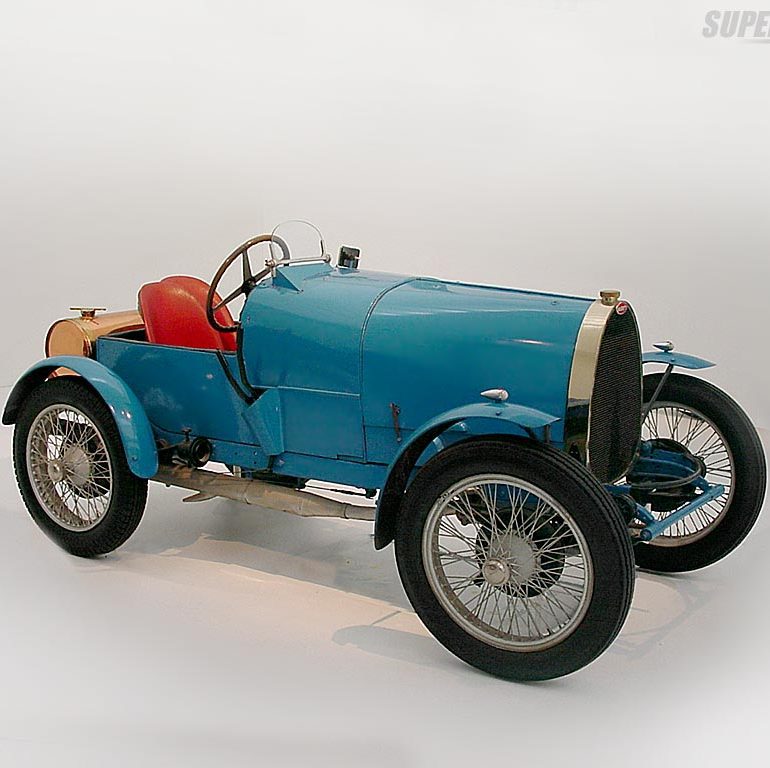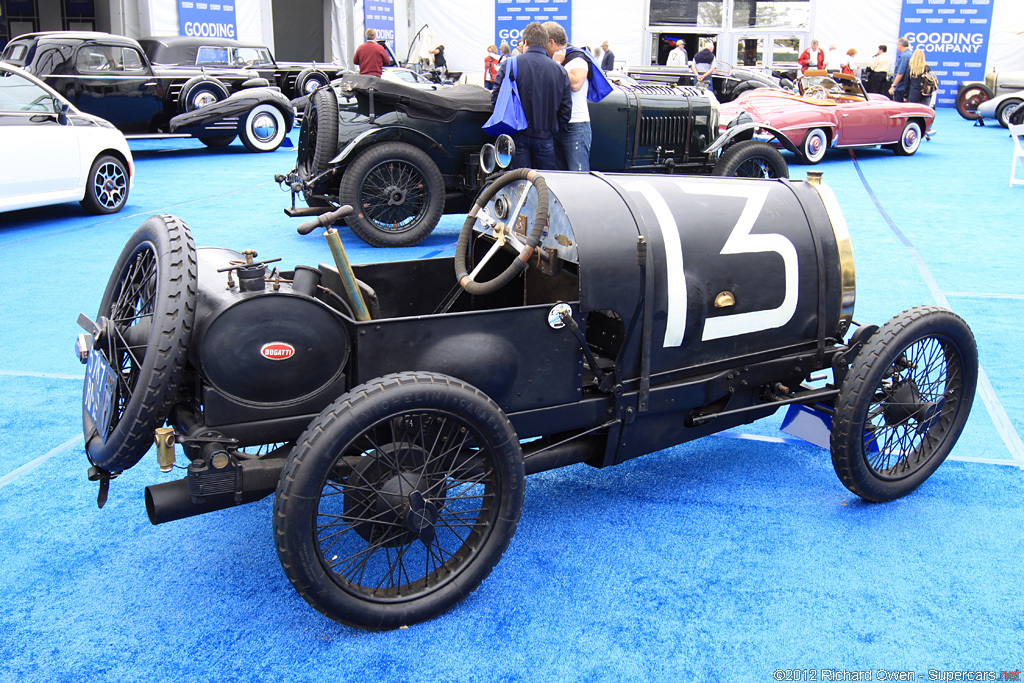1921 Bugatti Type 13
By 1920 Bugatti had established itself as an independent manufacturer and a dominant force in voiturette racing. The Type-13 was Bugattis short wheelbase chassis that really started the Bugatti maque. It featured many different engines, the first of which was a 1.3-litre engine, having two valves per cylinder.
In 1914, the engine powering the Type 13 and similar long wheelbase Type 22 and Type 23 was changed. The new engine featured an entirely new valvetrain featuring four valves per cylinder. This made the Type 13 one of the the first production road/race cars to feature four valves per cylinder.
With plain bearings, the 16-valve engine could freely rev up to 3000 rpms. Many drivers of the period raced the car up to 6000 rpm. Such an astonishing engine, combined with good road handling made the type 13 desirable racing package.
Due to its valvetrain, the Type 13 Voiturette started a decade of racing success for the Bugatti marque in 1920. One highlight of the car’s race season included a 1-2-3-4 finish Voiturette Grand Prix at Brescia in 1921.
16-valve Bugattis, including the types 13, 22 and 23 were produced until they were replaced in 1922 by the Type 30. Inspired by the Type 28 Concept, the new Type 30 introduced an all new Inline-8, having 3 valves per cylinder.
————
The Type 13 was one of the first cars to be produced and sold under the Bugatti name. Depending on wheelbase in 1913, other models were designated type 22 or 23. Both the type 22 and 23 featured longer wheelbases than that of the type 13.
In 1913, the Bugatti line experienced some minor upgrades compared to earlier examples. After 1913, all Bugatti models featured the classic rounded radiator which was used in almost every Bugatti model thereafter. The types 22 and 23 adopted the reversed quarter-elliptic springs, first seen on the Bugatti-designed Peugeot Bebe. The Type 13 retained the half-elliptic springs which were found on earlier cars.
When designing the car, Bugatti kept to the essentials. No frills were found aboard and no expense was spared during construction. The entire car was made with the best materials and craftsmanship available during the period. It was these qualities which set Bugatti marque apart from the rest of the industry. Too typically, an expensive car in the 1910’s had to be large and luxurious. Bugatti was one of the first manufacturers to ignore such trends.
The 1.5 litre, monobloc engine had ample power for the small size of the car. The engine and transmission were very efficient. Unrestricted flow of intake and exhaust gases, combined with a high-revving valvetrain, made for a well-balanced engine.
Although having the appearance of a toy, the Bugatti Type 13 was successfully raced. It was seen at hill climbs as early as 1910 looking rather out of place compared to the bulky and brutish competition. Where the Type 13 lacked in power, it made up in handling, steering and braking. These important elements were retained throughout all future Bugatti designs.
Related: See full 1921 Bugatti Type 13 Gallery here
Specs & Performance
| engine | Inline-4 |
| position | Front Longitudinal |
| aspiration | Natural |
| valvetrain | OHV, 4 Valves per Cyl |
| displacement | 1453 cc / 88.7 in³ |
| bore | 68 mm / 2.68 in |
| stroke | 100 mm / 3.94 in |
| power | 22.4 kw / 30 bhp @ 2700 rpm |
| specific output | 20.65 bhp per litre |
| f brake size | mm / in |
| r brake size | mm / in |
| wheelbase | 2000 mm / 78.7 in |
| front track | 1150 mm / 45.3 in |
| rear track | 1150 mm / 45.3 in |
| gear ratios | :1 |
| top speed | ~125.5 kph / 78.0 mph |
Auction Sales History
1920 Bugatti Type 13 – sold for $379,500 Beautifully Detailed Example of the Early Bugatti. Advanced 16-Valve, Overhead-Cam Engine. Impeccable, Well-Documented Provenance. Matching-Numbers Engine, Gearbox and Differential. Mechanically Restored by Phil Reilly & Company. Successful Monterey Historics and Bugatti Tour Participant. Featured in Bob King’s The Brescia Bugatti. Wonderful Character and Vintage Performance. Auction Source: 2012 Pebble Beach Auctions by Gooding & Company





